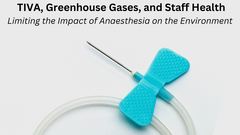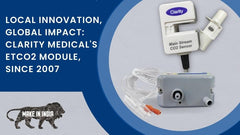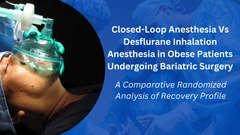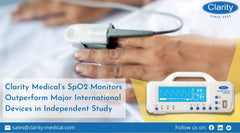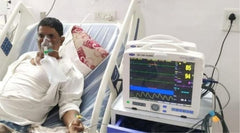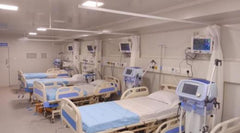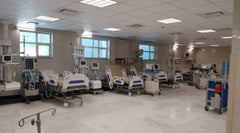Closed-Loop Anesthesia Vs Desflurane Inhalation Anesthesia in Obese Patients Undergoing Bariatric Surgery: A Comparative Randomized Analysis of Recovery Profile
Amitabh Dutta, Nitin Sethi, Goverdhan D Puri, Jayashree Sood, Prabhat Kumar Choudhary, Anil Kumar Jain, Bhuwan Chand Panday, Manish Gupta. Institute of Anesthesiology, Pain, and Perioperative Medicine, Sir Ganga Ram Hospital, New Delhi, India.
Department of Anesthesia and Intensive Care, Post Graduate Institute of Medical Education and Research, Chandigarh, India
Introduction
Morbidly obese patients are more vulnerable to post surgery adverse respiratory outcome (upper air- way obstruction, obstructive sleep apnea, or sedation) primarily due to their altered body constitution (in- creased body mass index [BMI], lower upper airway smooth muscle tone, or excessive oropharyngeal soft tissue). It is also likely that residual effect of general anesthesia (GA) may accentuate the above-stated issues with greater propensity in the morbidly obese as compared to non-obese adults. Therefore, given the high propensity of life-threatening hypoxemia and adverse ventilation consequences following bariatric surgery in the morbidly obese, a precision GA technique that minimizes residual anesthetic is warranted. Currently, inhalation GA with desflurane vapor (low blood: gas and oil: gas partition co-efficient and faster elimination profile) remains the technique-of-choice for morbidly obese patients undergoing laparoscopic bariatric procedures. Although propofol-based total intravenous anesthesia (TIVA) seems to be a promising alternative to desflurane GA, its use is limited by its potential to delay recovery because of the adverse accumulation kinetics (high lipid solubility, slow elimination) in the morbidly obese patients. Further, exercising the alternative propofol TIVA option is further curtailed because, first, it is not possible to precisely control manual administration of propofol TIVA, and second, the target-controlled infusions (TCIs), which are designed to achieve a pre-defined plasma concentration based on patient response and multi-compartment pharmacokinetic algorithm, are difficult to apply in the morbidly obese whose variable clinical-metabolic profile may offset the uniform steady-state plasma propofol levels achieved, and consequently, may perpetuate unpredictable recovery from anesthesia.
Recently, there has been a surge of emphasis on computer-controlled feedback loop automated systems which deliver propofol TIVA with far greater precision than manually controlled infusions. Closed- loop anesthesia delivery system (CLADS), a patented bispectral index (BIS) guided feedback loop system, uses a control algorithm drawn from diverse rates of propofol infusion and patient’s BIS variable to effect real-time regulation of the infusion rate to maintain a predetermined BIS target (BIS = 50) during anesthesia. A multi-centric evaluation of automated propofol TIVA using CLADS demonstrated a more robust GA state and early recovery from anesthesia compared to manual-infusion method. Contextually, though target-controlled propofol TIVA has been evaluated against inhaled desflurane GA in patients with severe obesity, the information on automated propofol TIVA is limited.
We hypothesize that automated administration of propofol TIVA which utilizes patients’ continuous monitored BIS scores as a control variable to articulate closed-loop controlled delivery of propofol is likely to offer greater efficiency, improved anesthesia depth consistency, and rapid recovery from anesthesia in the morbidly obese patients. This randomized study evaluated CLADS-driven propofol TIVA versus desflurane inhalation GA in patients undergoing bariatric surgery with respect to early and intermediate recovery profile (primary objective); they were evaluated for intraoperative hemodynamics, anesthesia depth consistency, anesthesia delivery system performance characteristics, patient satisfaction, and incidence of postoperative adverse events (sedation, pain, post- operative nausea, and vomiting [PONV]) (secondary objective).
Methods
Study Design
After Institutional Ethics Committee approval (approval no. EC/01/17/1105, name of Ethics Committee: Institutional Ethics Committee; date of approval: 25/03/2017) and written informed consent, forty-participants aged 18–65 years, American Society of Anesthesiologists physical status II/III, BMI > 35 kg/m2, of either sex, and undergoing elective laparoscopic bariatric surgery were included in this single center prospective, double-blinded (patients and outcome assessors), two-arm, randomized controlled study.
Patients with uncompensated cardiovascular disease, pulmonary dysfunction, hepato-renal or endocrinology disorders, allergy/hypersensitivity to drugs, history of substance abuse, and those with anticipated requirement of postoperative ventilation were excluded from the study. The study was registered at clinical- trials.gov protocol and results from the registration system (ID: NCT03099616; date of registration: 28/03/2017). All authors comply with the Declaration of Helsinki and relevant national laws and regulations.
The patients were randomly divided into one of the following two group
(1) CLADS group (n = 20): propofol TIVA (induction, maintenance) administered using automated CLADS.
(2) Desflurane group (n = 20): GA was induced with propofol administered using automated CLADS and maintained with desflurane inhalation.
The enrolled patients were randomly allocated (1:1 ratio) to one of the two groups based on a computer generated random number table. Randomization sequence concealment included opaque-sealed envelopes with alphabetic codes whose distribution was in control of an independent analyst. The envelopes were opened in the pre-operative holding area, patient’s data-slip was pasted on them, and the envelopes were sent back to the control analyst. The patients were enrolled by the author MG. the author PKC generated the random allocation sequence and assigned patients to intervention. The authors NS and AD conducted the cases. The authors BCP and JS, the blinded out- come-assessors, followed up the patients.
In addition to standard monitoring (electrocardiography [ECG], non-invasive blood pressure [NIBP], or pulse oximeter), processed electroencephalogram (EEG) monitoring using BIS was done in all the patients. All patients received fentanyl citrate 2 µg/kg before induction of anesthesia. After pre-oxygenation, anesthesia was induced with propofol administered by CLADS with a dosage based on lean body weight. A BIS-value of “50” was set as target endpoint for induction of anesthesia. Atracurium besylate 0.5 mg/ kg was administered to facilitate tracheal intubation. Anesthesia was maintained in the CLADS group with CLADS-controlled infusion of propofol. The infusion dose was set on CLADS based on adjusted body weight, and administration was controlled to target a consistent depth of anesthesia with continuous BIS monitoring (BIS-50). In patients belonging to the desflurane group, the vaporizer dial concentration titrated to maintain a BIS of 50 throughout the duration of surgery. Oxygen-air mixture (FiO2 0.50) was employed for ventilation in both groups. In addition, all the patients received fentanyl infusion (1.0 µg/kg/ h) for intraoperative analgesia. Intraoperative muscle relaxation was maintained using atracurium boluses controlled by train-of-four response on peripheral neuromuscular monitor.
Thirty minutes before the end of the surgery, paracetamol 1 gm was administered to all the patients. GA, propofol infusion or desflurane delivery, was discontinued at the point of completion of skin closure. Residual neuromuscular blockade (assessed with train-of-four response) was reversed with neostigmine (50 µg/kg) and glycopyrrolate (20 µg/kg). Tracheal extubation was undertaken once the patients were wide awake and obeying commands.
Intraoperatively, hemodynamics (heart rate and NIBP every 5 min) and the use of on-demand drugs to counter hemodynamic events (vasopressors, vasodilators) were recorded. Adequacy of anesthesia depth was determined by percentage of the anesthesia time during which the BIS remained ± 10 of the target BIS value (BIS-50). Performance metrics of CLADS were analyzed using the Varvel criteria and included median performance error (MDPE), median absolute performance error (MDAPE), wobble, and global score.
An additional parameter employed to assess early recovery from anesthesia was the ability of the patients to shift themselves from the operating room (OR) table to the transport bed and was graded using a 5-point scale: 0: cannot move, needs help; 1: moves only head, needs help; 2: moves head and one leg, needs help; 3: moves head and both legs, needs help; 4: able to move alone without help. After the surgery, patients were shifted to the postoperative recovery and were closely monitored for ECG, NIBP, SpO2, and respiration profile. Intermediate recovery was assessed using 10-point modified Aldrete score. Time to achieve a modified Aldrete score of 9 or 10 was noted. As per the institutional protocol, the patients were then shifted to the surgical high dependency unit for 24-hour intensive observation. The incidence of sedation was assessed using the Observer’s Assessment of Alertness/Sedation Scale (score-1 [deeply se- dated] to score-5 [wide awake]). Postoperative pain relief and PONV were assessed using a 10-cm visual analogue scale (VAS) (0: no pain; 10: severe pain) and a 3-point Likert scale (0: no nausea/vomiting; 1: nausea; 2: vomiting), respectively. “Rescue” analgesia included fentanyl 0.5 mcg/kg IV bolus for VAS ≥ 5 pain score. Ondansetron 4 mg was given for PONV (score ≥ 1). At a 24-hour time point postoperatively, patient satisfaction was assessed using a 10-point numeric rating scale (1: not satisfied; 10: fully satisfied).
Statistical Analysis
Statistical analysis was performed by the SPSS program for Windows, version 17.0 (SPSS Inc., Chicago, IL, USA) and included a comparison of baseline, primary, and secondary outcome variables between the two groups, namely, CLADS group and desflurane group. Continuous variables are presented as mean ± standard deviation or median [1st, 3rd quartile] and categorical variables as absolute numbers and percentages. Data were checked for normality using Shapiro-Wilk test before statistical analysis. Normally distributed continuous variables were compared using the student’s test, whereas the Mann-Whitney U test was used for those variables which were not normally distributed. Categorical variables were analyzed using either the chi-square test or Fisher exact test. “Baseline variables” (demographic parameters, time profile, type, and nature of surgery) were analyzed using standardized difference.
Primary outcome variables,” early recovery: time-to-eye-opening, time-to-extubation, and the ability of the patients to shift them from the OR table to the transport bed and intermediate recovery: time to achieve a modified Aldrete score of 9 or 10 was analyzed using Mann-Whitney U test. The “secondary variables,” including intraoperative hemodynamics were analyzed using student-t test and the repeated measures analysis of intragroup hemodynamics was done using repeated measures analysis of variance, anesthesia depth consistency (percentage of the anesthesia time BIS within ± 10% of target BIS, performance characteristics of anesthesia delivery system, such as MDPE, MDAPE, wobble, and global score), patient satisfaction, intraoperative drug dosage for maintaining hemodynamics, and postoperative ad- verse events, i.e., sedation and pain were analyzed using Mann-Whitney U test. The frequency of use of drugs for maintaining hemodynamics was analyzed using Fisher’s exact test and chi-square test. PONV was analyzed using chi-square test. A P-value less than 0.05 was taken to indicate a significant statistical difference.
In a previous study, the time-to-eye-opening with desflurane and propofol were 4.2 ± 1.3 min and 10.7 ± 6.9 min, respectively. Based on the above, a samples size of 15 patients was required per group to provide 90% power with a bilateral α-risk value of 0.05 to posit a significant difference in time-to-eye- opening. We recruited a total of 40 patients to cover up for unanticipated losses after the recruitment.
Results
Thirty-three of the total 40 patients completed the study endpoints (study conduct: April 4, 2017– December 2, 2019) (Figure 1).
No difference was found in the two groups in terms of demographic profile and surgical parameters (Table 1); time-to-eye-opening (CLADS group: 4.7 [3.0, 6.7] min vs. desflurane group: 5.6 [4.0, 6.9] min, P = 0.576); and time-to-tracheal-extubation (CLADS group: 6.7 [4.7, 9.3] min vs. desflurane group: 7.0 [5.8, 9.2] min, P = 0.528). Also, the median ability to shift from OR table to the transport bed (CLADS group: 3 [3.0, 3.5] versus desflurane group: 3 [3.0, 4.0], P = 0.703) was not different for the two groups.
There was no difference in the two groups in the time to achieve a modified Aldrete score 9/10 (CLADS group: 15 [15.0, 37.5] min vs. desflurane group: 15 [15.0, 43.7] min, P = 0.867) and median patient satisfaction score (CLADS group: 10 [9.5, 10.0] vs. desflurane group: 10 [9.0, 10.0], P = 0.329) (Table 2).
There was no difference in the intraoperative heart rate (Figure 2) and non-invasive mean arterial pressure (Figure 3), between the two groups. Heart rate following the extubation of the trachea was significantly greater in the desflurane group (CLADS group: 88.4 ± 14.7 beats per min vs. desflurane group: 100.6 ± 16.5 beats per min, P = 0.032).
The percentage of time BIS remained within ± 10 of target BIS (anesthesia depth consistency)
(CLADS group: 78.0% [71.5%, 84.5%] vs. desflurane group: 80.5% [69.0%, 85.2%], P = 0.787) was comparable for the two groups.
The performance characteristic of CLADS showed a difference in that the MDPE (CLADS group: 8 [6.0, 12.0] vs. desflurane group: 2 [–8.0, 7.5], P = 0.004) was significantly lower in the desflurane group. No difference was noted for the MDAPE (CLADS group: 12 [10.0, 14.0] vs. desflurane group:12 [10.0, 13.5], P = 0.851), wobble (CLADS group: 9 [8.0, 11.0] vs. desflurane group: 10 [8.0, 11.5], P = 0.693), and the global score (CLADS group: 28.2 [22.8, 33.0] vs. desflurane group: 25.7 [22.9, 37.7], P = 0.857).
In the first 24-hour post-surgery, no difference was found in the postoperative sedation scores, VAS scores for pain, and in the incidence of PONV be- tween the two groups (Table 3).
Discussion
Early and adequate recovery from GA remains an important goal in morbidly obese patients.

Figure 1. Consort Flow Diagram
Contextually, the choice of hypnotic agents, the presence of residual neuromuscular blockade, and opioid analgesics, all influence recovery from anesthesia, more so in the obese who have altered body constitution and upper airway dynamics. Importantly, since presence of residual anesthetic may delay recovery from GA, in the larger scheme of preventing adverse post operative respiratory outcomes in the morbidly obese, targeting rapid recovery by employing an efficient and precision GA technique merits exploration.
The present study which evaluated automat- ed CLADS-controlled administration of propofol TIVA versus inhaled desflurane-based GA in patients who underwent laparoscopic bariatric surgery found no difference in the “early” (time-to-eye-opening, time-to-tracheal-extubation) and “intermediate” (time to achieve a 9/10 modified Aldrete score) post anesthesia recovery profile.
Desflurane is preferred over isoflurane/sevoflurane GA in morbidly obese patients for its rapid elimination profile and negligible residual presence after discontinuation of anesthesia. Though propofol TIVA has been an attractive alternative for its associated advantages, e.g., lower incidence of PONV and lower greenhouse effect; the inconsistency in dosing scalars and administration techniques has limited its role in bariatric surgery. Other pressing issues which hamper recovery from anesthesia with propofol TIVA are the risk of accumulation and/or the hemodynamic depression, especially when administered based on total body weight.


Also, technically, the TCI-based propofol TIVA is relatively unsuitable for bariatric surgery because while the TCI pumps based on “Marsh” model have a pre-potential for over-dosing, those running on “Schneider” model tend to overestimate propofol clearance in adults (females-BMI > 37 kg/m2; males-BMI > 42 kg/m2) with a possibility of paradoxical which increases the propofol infusion rate.
Recently, the introduction of computer-controlled automated infusion systems, which are designed to deliver high-precision robust propofol TIVA while hemodynamic stability is preserved, has reinvigorated much interest. There is a plethora of high-end evidence to support safety and efficacy of these automated systems in adults undergoing cardiac/non-cardiac surgical procedures. The particular interest in employing CLADS-controlled propofol TIVA for patients undergoing bariatric surgery has a basis in that it factors-in patient’s EEG response and individualizes propofol infusion rate by continuous real-time titration.
In a study involving 36 morbidly obese patients who underwent laparoscopic gastroplasty, the mean time-to-eye-opening (desflurane group: 4.2 ± 1.3 min vs. propofol group: 10.7 ± 6.9 min, P < 0.05) and


time-to-tracheal-extubation (desflurane group: 5.6 ± 1.4 min vs. propofol group: 13.2 ± 7.6 min, P < 0.05) were significantly lower in patients administered desflurane inhalation GA as compared to those who received propofol by TCI pump titrated manually to maintain BIS between 45 and 55. In contrast, in the current study where propofol TIVA was administered and maintained by automated CLADS, no difference was found for the same set of recovery parameters, e.g., time-to-eye-opening and time-to-tracheal-extubation versus desflurane GA. Juxtaposing post anesthesia recovery parameters of the above with the present study indicates indirectly towards the possible superiority of CLADS over TCI system and that CLADS-controlled propofol TIVA could be a valid alternative to desflurane GA in patients with severe obesity.
In terms of the recovery parameter, i.e., patient’s ability to shift themselves from the OR table to the transport bed, while the patients belonging to both group (CLADS or desflurane) in the present study demonstrated a median “ability-to-shift” score of 3 (able to move head and both legs, needed little help to shift themselves); in Juvinetal’s study, the score was significantly different between the desflurane (score-3) versus TCI propofol TIVA (score-1).

Also, the post-anesthesia care unit discharge readiness time as per the eligibility processed by assessment of modified Aldrete score in the propofol CLADS and desflurane groups was found to be much lower than what is previously reported by Juvinetal. (propofol group: 198 ± 109 min vs. desflurane group: 126 ± 56 min, P > 0.05) and Elbakry et al. (TIVA [propofol + dexmedetomidine] group: 43.3 ± 10.4 min vs. desflurane group: 52.1 ± 9.7 min, P = 0.01).
Still, because of the caveat (dissimilar study methodology) which precludes comparing the present study with historical evidence, especially in the absence of evidence on the difference in recovery profile between TCI and CLADS propofol TIVA, the contextual superior recovery profile of our study can only suggest that techniques to administer propofol TIVA may have an important role in post anesthesia recovery of morbidly obese patients, and that it requires further exploration.
To the best of our knowledge, there has been no study that has compared the best of inhaled GA (desflurane) versus the most precise way to administer propofol TIVA. At an applied level, the present study felt the need to undertake evaluation of automated propofol TIVA versus desflurane GA in the morbidly obese patients where it is the most relevant and would matter the most in curbing post surgery recovery issues.
This study highlights two important aspects of automated propofol TIVA in morbidly obese patients; first, it fared well in establishing a robust GA state, and second, though having altogether different delivery mechanisms, CLADS propofol-TIVA, with the exception of MDPE, matched desflurane GA in respect to performance parameters (MDAPE, wobble, and global score).
The limitations of the present study which hampers generalizability include, issues with methodological construct (per-protocol vs. gold-standard intention-to-treat analysis), limited staff participation (2-anesthesiologists conducted all the study cases), and that all the secondary endpoints were not con- trolled by adjustment for multiple testing (high type-1 error).
Conclusion
In conclusion, automated CLADS-controlled propofol TIVA, by virtue of comparable depth of anesthesia, early recovery profile, and near-similar system performance to inhaled desflurane GA, can be explored further in the morbidly obese patients.
Acknowledgments
Assistance with the study: We would like to thank Ms. Parul Takkar Chugh, senior biostatistician, Department of Research, Sir Ganga Ram Hospital, New Delhi, India for analyzing the study data. Support and sponsorship: This work was supported by the Institute of Anesthesiology, Pain, and Perioperative Medicine, Sir Ganga Ram Hospital, New Delhi, India.



